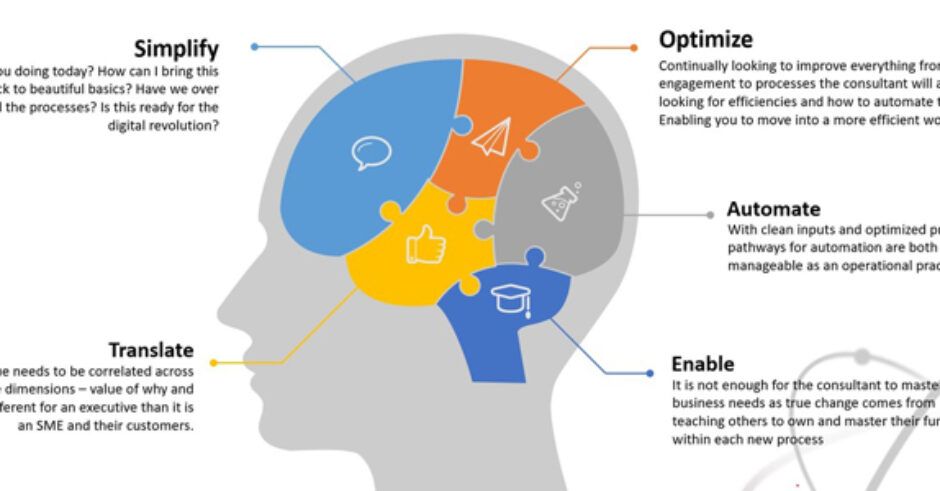For a while now, I have been helping companies to transition into an automated world where our human intellect is driven up the ladder by freeing us of the mundane tasks. It’s been a journey that some companies have thrived in and some have taken longer to adapt. To understand similarities, pitfalls, and the best deliveries, we need to look at how traditional ITIL Service Transition requires an evolution in this world of AI & Autonomic revolution.
The objective of Service Transition remains the same: To build and deploy IT services. The Service Transition lifecycle stage also makes sure that changes to services and service management processes are carried out in a coordinated way.
For years we have followed the objective and delivered technical services aligned to ITIL. Whilst the fundamentals remain the same, the biggest delays and failures occur when services are not adopted, change management is not followed, knowledge transition is lacking, and the business model is not aligned. This becomes especially true when embarking on the digital revolution journey. It’s not just a technical change but a people, business, and lifestyle transformation. The service transition framework has served us well over the years and certainly driven a more structured approach to delivery. Following these principles and maintaining quality is a challenge when people are involved. We have helped augment those gaps by building automation into our transition, but it does not answer the questions as to why failures still occur.
In my line of business we have pushed hard to remove those gaps and provided automated ways to deliver our technology. We also recognise the need for human capital to reduce failed adoption, delayed delivery and transformation that drives business change. In come the Optimization and Delivery Consultants (ODC). As a practitioner of change I started to invest my teams upstream to ensure what was being sold could be delivered and our clients were ready to embrace those changes. However, as with any ‘new toy’, the excitement and enthusiasm are present at the beginning but as time passes, it can dwindle unless you constantly maintain that lust with value drivers. Our delivery in transition needs a boost. Upstream and downstream as it passes through the phases, we need to maintain a constant. Here is where I bring in the Optimization and Delivery Consultants (ODC). A new breed of consultants who can live by the mantra, Simplify, Optimize, Automate. These consultants should be deployed between the Design, Transition and Operations ITIL lifecycle. Their role is key to bridging the gaps and removing the grey. To succeed in transition, we must ensure the design is simplified not just from a technical standpoint, but from an OCM (Organizational Change Management) view also. Questions need to be answered like, how will the introduction of AI transform the current workplace? How will people interact with this new technology and will their roles change? Do the existing processes and business model align to this new way of working? Our ODC’s, help answer those questions and ensure the business is ready for such changes. Again, it is important the design and impact on a business is discussed and agreed upon early in the lifecycle. Failure to recognise this will significantly decrease your delivery success KPI’s.
Moving through Transition, we Optimize to ensure what was identified to Simplify, is delivered as a partnership. Partnership is mandatory and cannot be a one-sided delivery team. When organisations embrace AI change, they need to part of the transition or transformation. Everyone must be cognisant of every moving part, how that will be delivered, the impact and how they will interact with the technology. The emphasis must be on people and business change. As a reference to a book I read ‘Crossing The Chasm’ (Geoffrey A. Moore), the technology being introduced through AI or autonomics is starting to rapidly move through the adoption cycle. Meaning we have past the Innovators, set up the Early Adopters and are at the chasm to jump to Early Majority. Therefore, we must evolve our transition methods. Failure to do so will leave us falling into the chasm!
Finally, as with humans, I would say we continue to transition ourselves, we learn, adapt, and evolve. AI and automimics should be viewed the same. There is no transition that starts at A and finishes at B. There is an iteration from A, to B, to C and so forth. So, transition has evolved and should not be looked at as a point in time for delivery but a journey that continues through the ITIL phases whilst maintaining your core people to augment the new business model and continued service improvement for business transformation.
The time for change is now! Bringing AI/Automonics in is one thing, but the continued journey for transformation lasts a lifetime!


